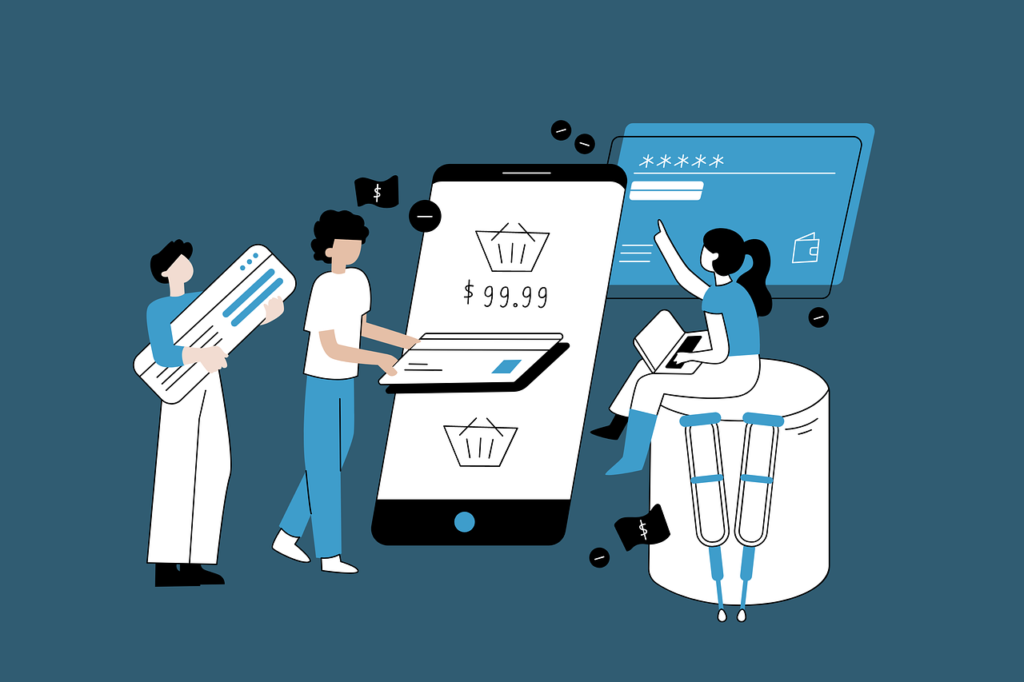TL;DR This article is about the benefits of, and methodology behind, integrating your business’ digital systems, with the aim of making this process relatable and understandable for non-technical readers. Back-end systems integration can be akin to a foreign language for many so I’ll be focusing on what is possible and how your business can benefit. And, boy, can it benefit.
The impact of Covid-19 on the UK business environment is becoming a little clearer with the economy shrinking by record levels, fewer people working and record unemployment levels looming.
People currently furloughed means fewer staff in businesses; the impending never-seen-before recession and the reduction of the scope of the furlough scheme might make that more permanent.
And smaller teams means a reduction in what businesses are capable of doing and an increase in stress and workload on others to maintain service levels, right? Not necessarily.
This is where digital evolution can really come to the fore.
For some time now, the UK Government has stressed the importance of digital evolution for the economy, particularly on our productivity levels.
However, businesses have struggled to square this with genuinely beneficial digital evolution projects. Some have tried and failed, some simply haven’t known where to start, some still aren’t convinced of the need or the value.
But maybe we’re entering a period where digital evolution won’t be a nice-to-have; it will be a necessity to keep business afloat and to ensure they abide by new practices – particularly for a certain type and size of business.
Or, at least certain elements of digital evolution will become a necessity. The uncertainty of what an individual business will look like once its operating again will likely mean a need for a closer eye on finances, with a real-time view of costs, sales and outstanding invoices.
Moving staff from low to high-value work and automating manual processes become even more important.
With elements of digital evolution and systems integration, these outcomes can be achieved – and it might just help when making decisions on the future of staff and the future of the business.
The beauty of the back-end
While a speedy, modern website with a great user experience and a myriad of e-commerce techniques to drive conversion and loyalty and increase customer spend should be front of mind, it isn’t the only consideration for businesses wanting to make their digital evolution a reality.
As customers, when we make an e-commerce purchase we pay our money, receive our order confirmation and wait for our delivery.
As a business, it’s great to make the online sale, but there’s still plenty of work to be done: retrieving and storing the customer’s details, verifying payment details, adding the order to the sales system, pushing the order through an accounting procedure, updating stock levels, sending details to the warehouse for packing, processing delivery.
At each stage issues could arise: manual error when inputting data, out-of-stock products being ordered, specific delivery instructions being missed or simply a shortage of staff to complete any of the necessary stages.
Enter systems integration to automate all of the above – and more – removing the need for manual involvement until the product needs packing and sending.
Remove the potential for errors – or at least reduce the number of times where these can occur – and the result is happier customers and less time devoted to dealing with complaints, refunds and man-management.
Then there’s the efficiency increase – customers waiting for shorter periods to receive their goods and the removal of a number of manual tasks. As a result, staff can be redeployed to higher-value work or, if a business prefers, head count can be reduced.
With the integration of e-commerce websites, inventory systems and accounting platforms comes the ability to get a financial view at any point. No more waiting for orders to be input at the end of the day, or week; no more inflated prices to pay when you realise you’ve run out of stock and need products urgently.
You’ll need to ensure that you’ve got an accounting and inventory management system with the ability to securely manage credit card information. If receiving a large amount of orders and you want a smoother customer experience, you’ll want to consider a system which includes a data storage facility that secures this information. That way customers won’t continually have to re-enter their card details.
Back to front
Another key benefit with two-way e-commerce integration is consistency across the business. Proper integration means that a product update in your inventory platform is automatically reflected on your website.
A common frustration between internal teams is that products aren’t consistently named – integration solves this in one hit. Change the product name in your back-end system and it gets reflected on your website, also meaning that customers are talking the same language when contacting you with queries.
Such integration also ensures customers are receiving the latest information on the website regarding stock levels and that your internal inventory system is accurate. When that system displays zero, an ‘out of stock’ message is automatically displayed on the website, thus providing customers with accurate, real-time information.
Where a business operates both B2C and B2B e-commerce functions, the latter can sit behind a log-in on an online portal and still be integrated with the system controlling inventory. This way, if a B2B customer makes a large order of a particular product which is also sold on the B2C website, accurate stock levels can still be displayed on both websites.
Settings on individual items can be adjusted within the inventory system so that separate pricing can be displayed for the B2C website and for a range of B2B customers. Have a particularly large customer who has their own pricing, say retail minus 20%? Not a problem.
Systems can auto-generate invoices for B2B customers, be set up to automatically chase invoices and proceeding communications. B2B customers can also be asked to make online payments which is more efficient and is better for cashflow.
Integration also ensures that prices match in front and back-ends. It sounds fundamental but if your website and product inventory aren’t talking to each other then there’s obvious room for error.
Your marketing team might run a promotional campaign to drive sales, complete with discounted prices – but if your back-end system fails to reflect the price change this will affect your accounts.
If you choose to reduce the price of an ageing product within your catalogue but the website team doesn’t get the message then your site won’t reflect the price drop and customers will be completely unaware of the reduction. The result? Fewer sales and old products gathering dust on warehouse shelves.
Dealing with online booking systems
The ability to buy tickets, book rooms or make reservations online is now commonplace and at Quickfire, we have significant experience in the tourism and attractions industry which means we have seen the business need for systems integration at first hand.
Many businesses within the industry will use a separate booking system which bolts on to their website. I’m sure you’ll have noticed the URL sometimes changes completely to resemble something like bookingsystem.com/theroseandcrown.
Customers make their booking via the third-party reservation system but there’s then often a manual requirement for the booking to be logged again on an internal system. A keystroke error or a shortage of staff time can result in incorrect information or delays and the end result can be disgruntled customers because of a double booking or wrong time slot.
The way to overcome this is for the booking system and the internal system to talk to each other to ensure that data is passed correctly.
The way to do this is via an API – or application programming interface. APIs are essentially question and answer systems – so two systems can talk together and data can be matched – that deliver a request to a provider and then returns the response.
But booking systems are notoriously tricky to complete such a task. It takes experience and knowledge to achieve this. APIs can also be changed without warning which leads to a breakdown in the two-system communication.
Getting such a set-up right can also deliver more powerful customer experiences. For example, it can help with verification of season-ticket holders to show discounts to them and limit numbers to an attraction, particularly relevant once attractions are allowed to reopen post-lockdown at a reduced capacity.
Summary
There are tough times around the corner. Some businesses will disappear, some will struggle on manfully and survive, some will be forced into cutting staff numbers – but some will flourish.
And the ones who do emerge stronger will have one thing in common: they will be turning to digital solutions to improve their business.
The UK Government has been wanting to accelerate digital evolution for some time. A world pandemic might be the catalyst.



